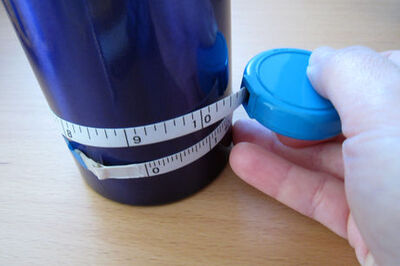
views
New Delhi: As reports about the rising water crisis continued to come in from different corners of the country, a latest report of the Central Water Commission revealed that two-third (65%) of the water reservoirs were running dry.
Of the 91 reservoirs in the country, 59 have reported below-normal storage of water, while the remaining 32 have more than 80 percent of normal storage. Of the 59 reservoirs with below-normal storage, 36 have wave upto 50 percent of normal storage.
According to the CWC report, live storage available in all these 91 reservoirs is 17 per cent of their total capacity. Last year, the live storage available in these reservoirs for the corresponding period was 18 per cent. The total live storage capacity of these reservoirs is about 63 per cent.
Of the 91 reservoirs, 11 are completely dry. Maharashtra has the maximum number of reservoirs at 17 and also the highest number of dry ones — six. While one reservoir is dry each in Tamil Nadu, Madhya Pradesh, Jharkhand and Andhra Pradesh and Telangana (combined).
The overall storage position is less than the corresponding period of last year in the country as a whole and is also less than the average storage of last 10 years during the corresponding period. The current year’s storage is nearly 92 per cent of last year’s storage and 93 per cent of the average of last 10 years.
Further analysis shows 19 reservoirs have storage more than last year, while 22 of them have storage more than the average of the last 10 years. As many as 18 reservoirs have storage less than 20% with respect to last year. When an average of the last 10 years is drawn on this, the figure stands at 22.
The number of reservoirs having storage less than or equal to 50% with respect to last year are 39, while 36 have storage less than or equal to 50% with reference to an average of the last 10 years.
Region-wise Shortage Status
Region-wise data analysis shows majorly the reservoirs in eastern, western and southern regions of the country are facing high shortage of water. In the central zone, Uttar Pradesh and Chhattisgarh are affected, while the situation in the northern part of the country is better.
In the five regions across the country, namely northern, eastern, western, central and southern there are 4, 14, 27, 10 and 30 reservoirs, respectively, where 40 per cent or below storage of water is available.
In the northern region that includes Himachal Pradesh, Punjab and Rajasthan, there are six reservoirs. The total live storage available in these reservoirs is 38 per cent of the total live storage capacity. The storage during corresponding period of last year was 16 per cent and average storage of last 10 years for the same period was 26 per cent. Hence, the current storage capacity is better than the previous years.
In the eastern region, there are 15 reservoirs in Jharkhand, Odisha, West Bengal and Tripura. The total live storage available in these reservoirs is 17 per cent. The storage during corresponding period of last year and the average storage of last 10 years was 19 per cent and 15 per cent, respectively. This means storage during the current year is less than the corresponding period of last year, but better than the average storage of last 10 years.
Western region’s Gujarat and Maharashtra have 27 reservoirs and the total live storage available in these reservoirs is 10 per cent of the total storage capacity of these reservoirs. Their last year’s storage was 13 per cent and the average storage of last 10 years was 17 per cent. Thus, storage during current year is less than the last 10 years.
The central region includes Uttar Pradesh, Uttarakhand, Madhya Pradesh and Chhattisgarh. Among these states, the highest decline of around 22 per cent in live storage when compared to the average of last 10 years has been observed in Chhattisgarh.
There are 12 reservoirs in the central region where the total available live storage is 21 per cent. It is equal to the storage during corresponding period of last year. However, with 2 per cent more water, it is better than last 10 years’ average.
The southern region includes Andhra Pradesh, Telangana, Karnataka, Kerala and Tamil Nadu. In the 31 reservoirs of this region, the total live storage available in these reservoirs is 10% of the total live storage capacity. The storage during current year is less than the corresponding period of last year (20 per cent) and average of last 10 years (16 per cent).
Basin-wise Shortage Status
Better than normal storage is available in the Indus, Narmada, Mahanadi and neighbouring “east flowing rivers". Close to normal storage is in the Ganga, Mahi, and “west flowing rivers of south". While Sabarmati, Godavari, Krishna, Cauvery and rivers of Kutch have deficient water levels, storage in the Tapi river is highly deficient.
According to the weekly report by the India Meteorological Department (IMD), the cumulative rainfall till June 19 was below 43 per cent of the average. However, the situation is likely to improve with the IMD stating on Sunday that monsoon has further advanced into east Uttar Pradesh, some parts of central Maharashtra and most parts of Marathwada and Vidarbha regions.


















Comments
0 comment